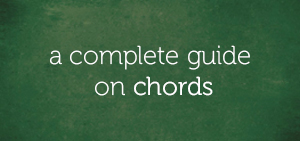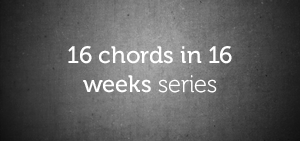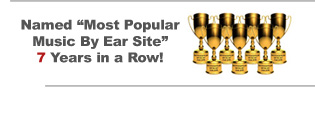To pick up where we left off yesterday, I’d like to talk about the connection between major and minor chords.
From yesterday‘s post, you now realize that you can form any minor scale by knowing the relative major scale it’s connected to. In other words, you can play the “A minor” scale if you already know the notes of the “C major” scale because they’re related.
C major and A minor share the same notes.
They share the same number of sharps and flats in their scales (in this case, ZERO).
And, they share the same CHORDS!
Major and Minor Chords Explored
What if I told you that playing minor chords was as easy as the trick we used to learn minor scales?
Recall that in order to turn any major scale into its relative minor scale, you simply go to the 6th tone and play the same exact notes now starting and ending on that tone.
For example, take the C major scale:
C D E F G A B C.
If you turn each tone into a number (C is 1, D is 2, E is 3, F is 4, G is 5, A is 6, B is 7), you’ll quickly discover “A” is the 6th tone.
Simply play these same notes (don’t change a thing!) starting and ending on A and you’ve got yourself an “A minor” scale.
We call C major and A minor relative keys.
C is the relative major of A minor.
A minor is the relative minor of C major.
Major and Minor Chord Conversions
Chords work the same way.
Take a C major chord:
Its notes are: C, E, G.
To convert this chord into its relative minor (that is, “A minor”), simply add the “6th” tone to the bottom of the chord.
…and that’s called an “A minor 7” chord.
Now, just in case you’re not wanting to play a fancy “A minor 7” and just want to play the basic “A minor” triad, drop the highest note (G) and you’ve got yourself a regular A minor triad:
Let’s apply this principle to another key.
In the key of F, you’d take an F major chord:
Identify the 6th tone, which is D, and simply place that on the bottom:
This gives us a D minor 7 chord.
If you’re only after a 3-fingered D minor triad, drop the highest note:
There you have it… a simple and easy way to convert any major chord into a minor chord.
Because, as I always say – “If you know your major, you know your minor!”
Major and Minor Chords – Bonus
Here are the relationships between all the other major and minor scales:
C major – A minor
F major – D minor
Bb major – G minor
Eb major – C minor
Ab major – F minor
Db major – Bb minor
Gb major – Eb minor
B major – G# minor
E major – C# minor
A major – F# minor
D major – B minor
G major – E minor







Comments on this entry are closed.